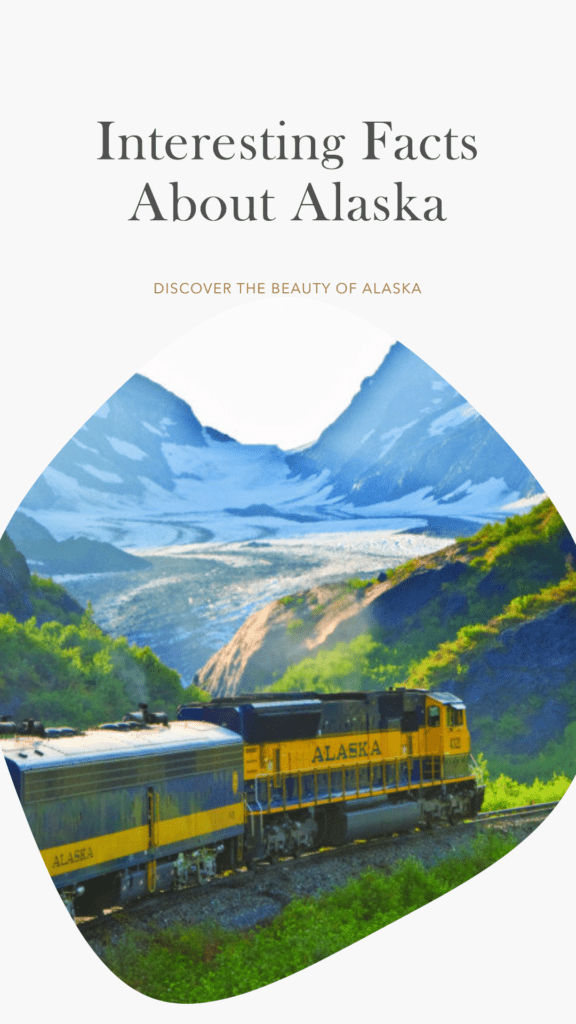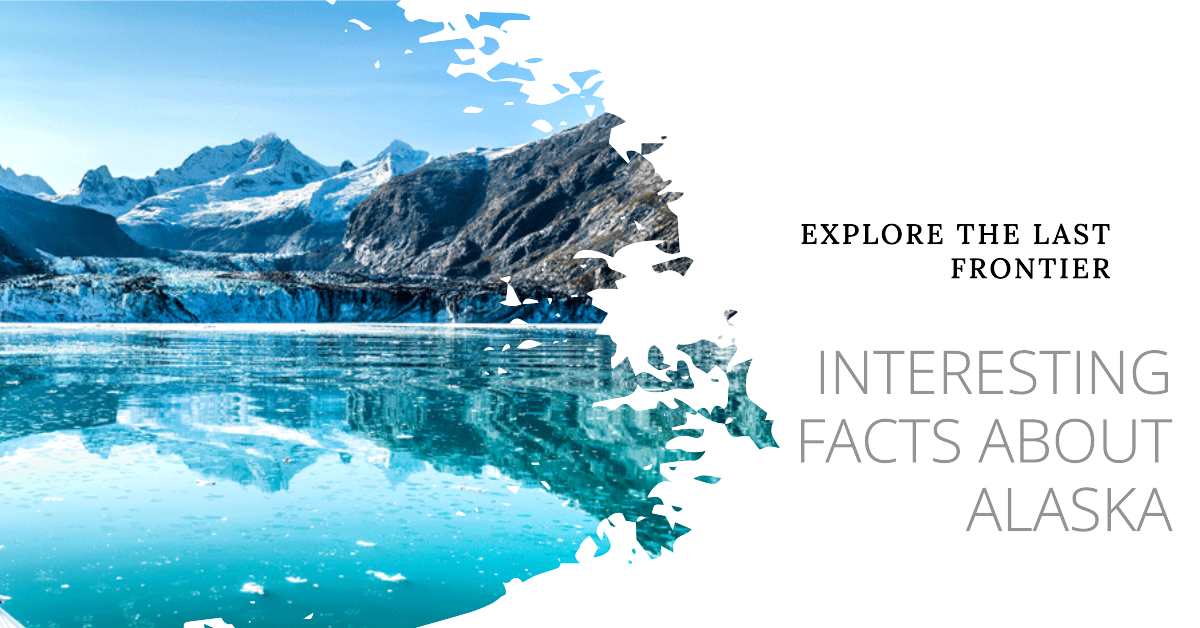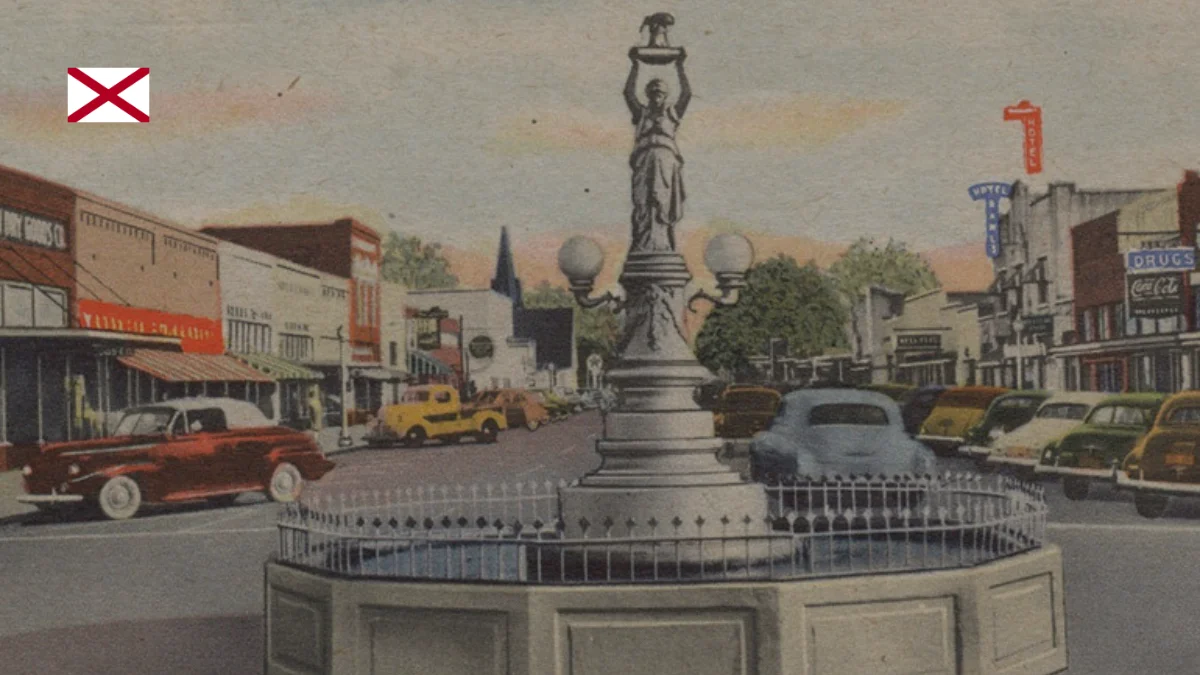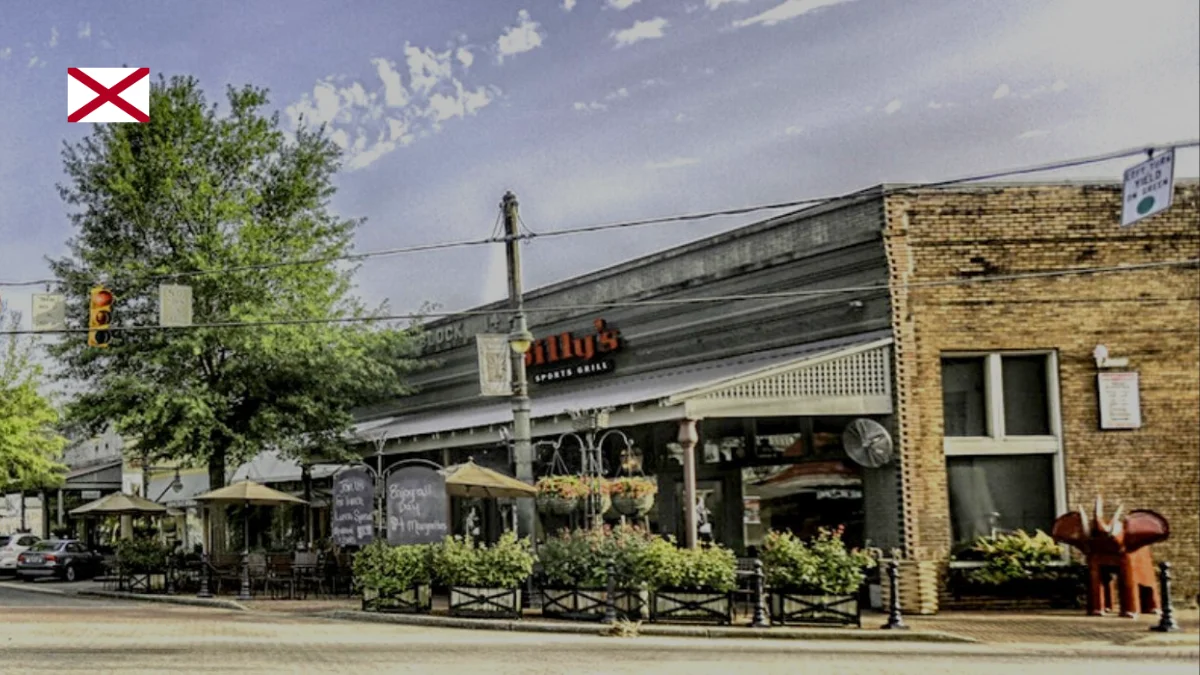Facts About Alaska
- Alaska is the largest state in the United States, covering an area of approximately 663,268 square miles / 1,717,856 square kilometres.
- Despite its size, Alaska is the least densely populated state, with a population density of only about one person per square mile.
- Alaska has over 3 million lakes, including Lake Iliamna, which is the largest lake entirely within one U.S. state.
- The name “Alaska” is derived from the Aleut word “Alyeska,” meaning “great land” or “mainland.”
- Juneau, the capital of Alaska, is the only state capital in the United States accessible only by boat or plane—there are no roads connecting it to the mainland.
- Alaska has more coastline than the rest of the United States combined, stretching over 6,600 miles.
- Mount McKinley, also known as Denali, is the highest peak in North America, reaching a height of 20,310 feet, above sea level.
- Alaska is home to 17 of the 20 highest peaks in the United States.
- There are approximately 100,000 glaciers in Alaska, covering about 5 per cent of the state’s total land area.
- The Hubbard Glacier, located in southeastern Alaska, is the largest tidewater glacier in North America.
- Alaska has more than 70 potentially active volcanoes, with the most notable ones located in the Aleutian Islands.
- The Trans-Alaska Pipeline, stretching over 800 miles or 1,300 kilometres, transports oil from Prudhoe Bay to the port of Valdez.
- Alaska experiences extreme daylight variations. In Fairbanks, for example, the longest day in summer can have over 22 hours of daylight, while the shortest day in winter may have only a few hours of twilight.
- The aurora borealis, or Northern Lights, can be seen in Alaska during the dark winter months, providing spectacular displays of vibrant colours in the night sky.
- Alaska has a significant Native Alaskan population, with over 20 distinct Indigenous cultures, each with its own languages and traditions.
- The largest Native Alaskan group is the Iñupiat, primarily residing in the northern regions of the state.
- Alaskans celebrate Alaska Day each October 18.
- The Iditarod Trail Sled Dog Race is an iconic annual event in Alaska, covering more than 1,000 miles or 1,600 kilometres from Anchorage to Nome.
- Alaska is home to diverse wildlife, including bears (such as grizzly bears and black bears), moose, caribou, wolves, Dall sheep, bald eagles, and various marine mammals.
- The Kodiak brown bear, found on Kodiak Island, is one of the largest bears in the world.
- The state bird of Alaska is the Willow Ptarmigan, a bird that changes its plumage colour with the seasons.
- Alaska has a large salmon population, with five different species: Chinook (king), coho (silver), sockeye (red), pink (humpy), and chum (dog) salmon.
- The Bering Sea, located between Alaska and Russia, is one of the richest fishing grounds in the world.
- Alaska has no sales tax or state income tax and instead relies heavily on revenue from oil and gas production.
- The Alaska Permanent Fund is a unique fund established to manage a portion of the state’s oil revenues and provide annual dividends to eligible Alaska residents.
- Alaska is called the Land of the Midnight Sun because for over two months in the summer, in the northernmost part of the state
- Alaska has eight national parks, including Denali National Park, Wrangell-St. Elias National Park, and Glacier Bay National Park.
- Alaska has 16 of the 20 highest mountains in the United States, including Mount St. Elias, the second-highest peak in the country.
- Alaska’s state motto is “North to the Future.”
- The Alaska Highway, also known as the Alcan Highway, is a 1,387-mile road that connects Alaska with the rest of North America.
- The Aleutian Islands, a chain of volcanic islands, extend about 1,200 miles into the Pacific Ocean from the southwestern tip of Alaska.
- Alaska has the longest coastline of any state in the United States, spanning approximately 34,000 miles.
- The official state flower of Alaska is the Forget-me-not.
- The largest salmon ever caught was at the Kenai River, weighing in at 97 pounds and four ounces.
- Alaska has 10,378 active pilots, making around 1% of the Alaskan Population with a pilot’s license.
- The state sport of Alaska is dog mushing, reflecting the historical significance of sledge dogs for transportation and travel in the region.
- The Alaska State Fair, held annually in Palmer, showcases giant vegetables, including enormous pumpkins and cabbages that thrive in the state’s long daylight hours.
- Alaska has more than 3,000 rivers, including the Yukon River, one of the longest rivers in North America.
- Alaska has a maritime climate, characterized by cool summers and cold winters, with some areas experiencing subarctic or Arctic climates.
- The city of Barrow, located in northern Alaska, experiences polar nights during the winter months, with no sunrise for about two months.
- Alaska has 39 mountain ranges, including the Alaska Range, Brooks Range, and Chugach Mountains.
- The state flag of Alaska features the Big Dipper and the North Star (Polaris) to symbolize the state’s northern location.
- Alaska has more than 10,000 rivers, lakes, and ponds.
- Alaska’s economy is heavily reliant on natural resource extraction, including oil, gas, minerals, and commercial fishing.
- The Alaska Native Claims Settlement Act passed in 1971, was a landmark legislation that settled land and financial claims of Alaska Native groups.
- Alaska has more than 100 volcanoes, with Mount Spurr, Mount Redoubt, and Mount Augustine being some of the most active.
- The state fish of Alaska is the king salmon (Chinook salmon).
- The state tree of Alaska is the Sitka spruce.
- Alaska has more than 80,000 glaciers, covering an area of about 29,000 square miles.
- The town of Nome gained international attention during the 1925 serum run, also known as the “Great Race of Mercy,” when sledge dogs transported diphtheria antitoxin serum to combat an outbreak.
- Alaska has a large population of bald eagles, and the Chilkat Bald Eagle Preserve near Haines is one of the best places to observe them.
- The Alaska Railroad, stretching over 470 miles, provides scenic rail transportation through some of the state’s most beautiful landscapes.
- The Alaska State Museum in Juneau showcases the art, culture, and history of Alaska’s diverse communities.
- The Alaska Native Heritage Center in Anchorage offers exhibits, performances, and demonstrations that highlight the traditions and heritage of Alaska’s Indigenous cultures.
- The geologic forces that shaped Alaska include tectonic activity, volcanic eruptions, and glacial movements.
- The Matanuska-Susitna Valley in Alaska is known for its fertile soil, which supports agriculture and the growth of giant vegetables.
- Alaska has the lowest population density of any U.S. state
- The Alaska Marine Highway System is a network of ferries that connects various coastal communities and allows for the transportation of people, vehicles, and goods.
- Indigenous people of Alaska including the Inuit, Tlingit, Haida, Aleuts, Athabascans, and Yup’ik still live here.
- The town of Whittier, located on the Prince William Sound, can only be accessed by car through a tunnel that is shared with the railroad.
- The Alaska State Troopers are responsible for law enforcement in rural areas of the state, where there may not be local police departments.
- Alaska is home to the University of Alaska system, which consists of three main campuses in Anchorage, Fairbanks, and Juneau.
- The Alaska Native languages are an important part of the state’s cultural heritage, with 20 distinct Native languages still spoken today.
- The Alaska State Bird Sanctuary, located near Cordova, provides a protected habitat for migratory birds, including sandhill cranes and trumpeter swans.
- The town of Talkeetna, located at the base of Mount McKinley/Denali, is known for its quirky and artistic community.
- Alaska has a vast array of outdoor recreational activities, including hiking, fishing, hunting, kayaking, skiing, snowboarding, and dog sledging.
- The town of Sitka was once the capital of Russian America, and the Russian influence can still be seen in its architecture and cultural heritage.
- The Alaska Railroad offers a scenic route called the Coastal Classic, which travels from Anchorage to Seward, showcasing breathtaking coastal views.
- Alaska’s biggest export is the mineral zinc, but gold is its most famous export.
- Alaska has a large population of sledge dogs, and dog sledging tours and races are popular attractions, including the famous Iditarod.
- The town of Homer, located on the Kenai Peninsula, is known as the “Halibut Fishing Capital of the World.”
- Alaska is the only state that does not collect state sales tax or levy an individual income tax, however, some cities do collect tax.
- The Alaska State Fair, held in Palmer, features unique events such as giant cabbage weigh-offs, chainsaw carving competitions, and rodeos.
- Alaska has a thriving arts and music scene, with many local artists, musicians, and performers showcasing their talents throughout the state.
- The Alaska Aviation Heritage Museum in Anchorage celebrates the rich history of aviation in Alaska, including the role of bush pilots and the development of air transportation.
- The Mendenhall Ice Caves, located near Juneau, offer a unique and mesmerizing experience inside the glacier.
- The town of Skagway played a significant role during the Klondike Gold Rush, serving as a major gateway for prospectors heading to the goldfields.
- Alaska’s name comes from the native Aleut word Alyeska, or Aláxsxaq, which roughly means “great land.”
- The Alaska Native Medical Center in Anchorage is a renowned healthcare facility that provides specialized care to Alaska Native and American Indian communities.
- The Alaska SeaLife Center in Seward is the state’s only public aquarium and marine mammal rehabilitation centre, featuring exhibits and educational programs.
- The lowest temperature recorded in Alaska was -80 degrees at Prospect Creek Camp in 1971. making it the lowest recorded temperature in the United States of America.
- The town of Valdez is known for its stunning coastal scenery, as well as being the terminus of the Trans-Alaska Pipeline.
- Alaska has a rich history of Native storytelling and oral traditions, with legends and folklore passed down through generations.
- The Alaska Botanical Garden in Anchorage showcases a diverse range of native plants and offers educational programs on gardening and conservation.
- Alaska has a significant population of moose, and moose-watching tours are popular among visitors.
- The Alaska Zoo in Anchorage is home to a variety of animals, including polar bears, musk oxen, wolves, and bald eagles.
- The town of Nome is famous for its annual Iditarod Trail Sled Dog Race and the gold rush history.
- The Chugach Mountains near Anchorage provide excellent opportunities for hiking, skiing, and wildlife viewing.
- The first people probably came to what is now Alaska about 13,000 years ago.
- The Pribilof Islands have the largest aggregation of northern fur seals.





